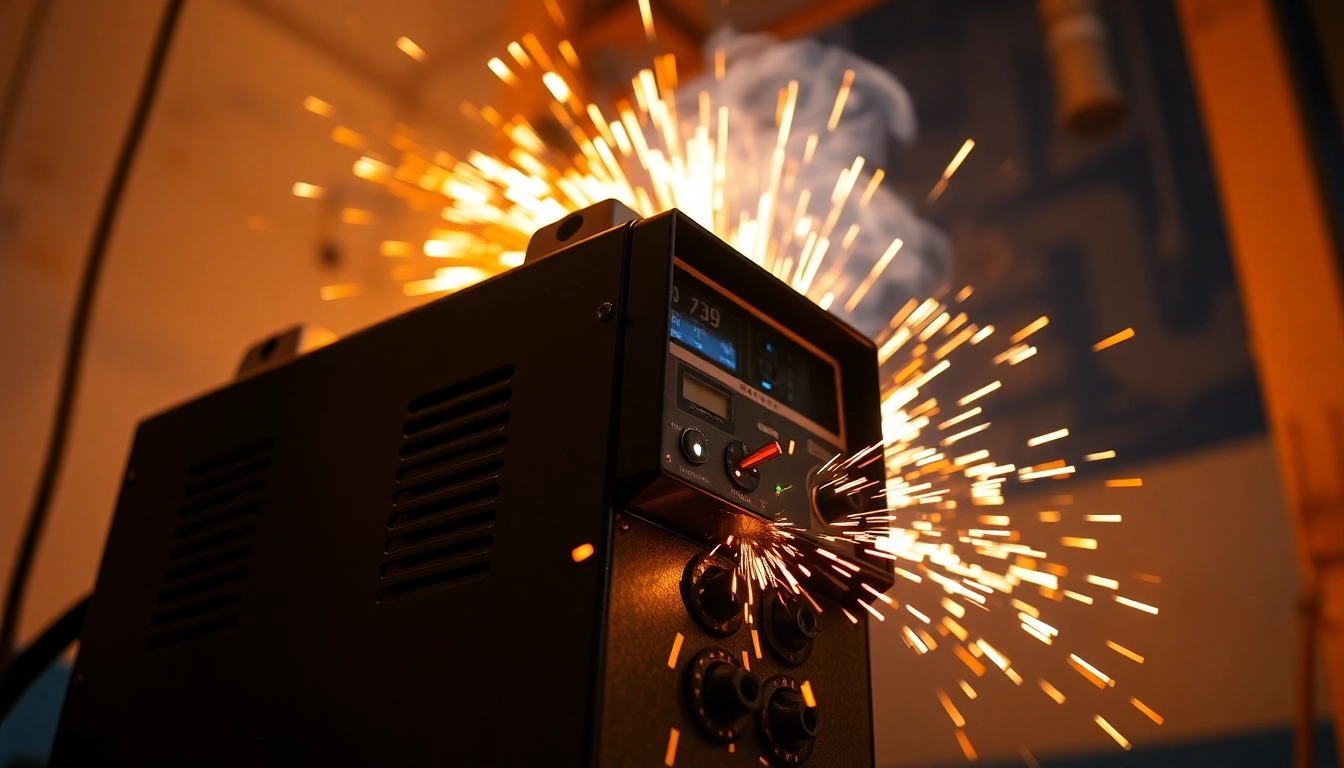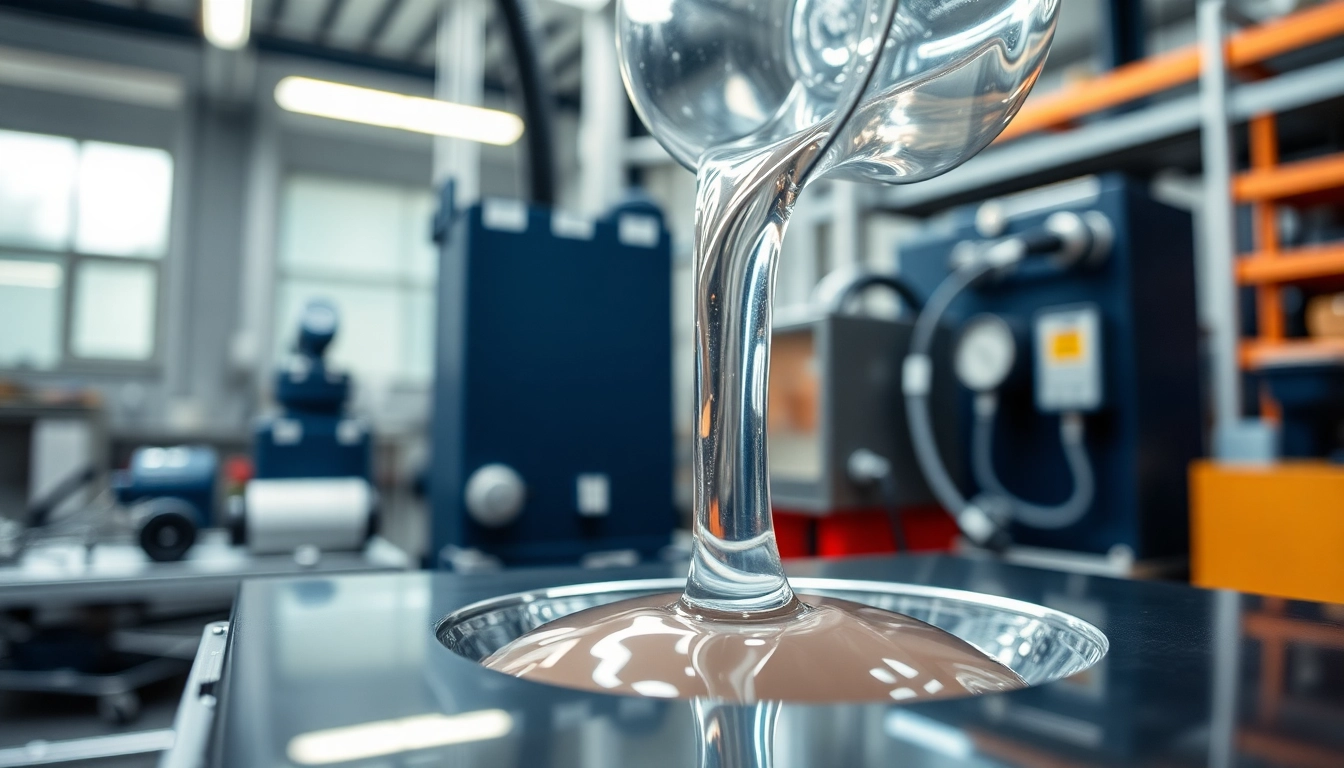Understanding Precision Die Cutting
What is Precision Die Cutting?
Precision die cutting is a manufacturing process that involves the use of a die to cut materials into specific shapes with a high level of accuracy. This method is particularly advantageous for producing large quantities of parts in various industries, including automotive, packaging, electronics, and medical devices. The process can accommodate a wide range of materials, like paper, plastics, rubber, and metal, making it a versatile choice for manufacturers. Whether for prototype development or large-scale production, the benefits of precision die cutting are manifold.
The Importance of Precision in Manufacturing
In manufacturing, precision is paramount. High precision translates into reduced waste, improved operational efficiency, and enhanced product quality. With increasing competition in various sectors, manufacturers must maintain stringent quality controls to ensure every component meets exact specifications. Precision die cutting facilitates this need by allowing manufacturers to achieve tolerances as tight as ±0.005 inches, which is critical when parts are assembled into larger systems. Furthermore, the exactness of precision die cutting minimizes the likelihood of defects, reducing costly rework and maintaining consumer trust.
Common Applications of Precision Die Cutting
Precision die cutting is utilized in a myriad of applications across different industries. Here are some common uses:
- Automotive Parts: Components like gaskets, seals, and insulating materials are often created through precision die cutting, ensuring compatibility and performance.
- Packaging: Custom packaging designs, inserts, and trays for various products utilize this method to enhance presentation and protect items during transit.
- Electronics: Precision die-cut materials such as conductive foils, insulative layers, and custom shapes contribute significantly to the manufacturing of devices.
- Medical Devices: Critical components like surgical instruments and disposable products, requiring stringent cleanliness standards, often rely on precision techniques.
Types of Precision Die Cutting Techniques
Rotary Die Cutting Explained
Rotary die cutting involves the use of a cylindrical die mounted on a rotating drum. As materials feed through the machine, the die cuts the material into the required shape. This method efficiently handles large volumes and allows for continuous movement, making it suitable for high-speed production.
One of the main advantages of rotary die cutting is its capability to perform multiple operations simultaneously, including cutting, perforating, and embossing. It is especially effective for thin materials and provides consistent quality throughout the production run, often making it the preferred choice for flexible packaging.
Flatbed Die Cutting: Pros and Cons
Flatbed die cutting employs a stationary flat press where the die and the material are placed. This technique is well-suited for thicker materials or larger parts and is often used for precision items that require more detailed cuts.
The advantages of flatbed die cutting include:
- Ability to cut thicker materials without distortion.
- Flexibility in die design, allowing for intricate patterns.
However, it also has its limitations, such as slower production speeds and higher setup costs compared to rotary methods. Therefore, while flatbed die cutting is beneficial for specific applications, manufacturers must weigh these pros and cons based on their production needs.
Laser Die Cutting: Precision and Versatility
Laser die cutting uses a focused beam of light to cut materials, providing exceptional precision and versatility. This technique allows for complex shapes and detailed designs that are often unattainable with traditional methods. It is particularly effective for materials such as acrylic, cardstock, and textiles where intricate designs are required.
Some key advantages of laser die cutting include:
- Minimal material waste due to precise cuts.
- Ability to cut and engrave simultaneously.
However, challenges may arise with certain materials that may melt or require extensive cooling periods. Therefore, careful selection of materials ensures that laser die cutting achieves the desired results.
Choosing the Right Precision Die Cutting Service
Key Factors to Consider
When selecting a precision die cutting service, it’s crucial to evaluate several factors to ensure you partner with a provider that aligns with your needs:
- Experience and Expertise: Look for a service provider with a proven track record in precision die cutting, especially in your industry.
- Quality Control Processes: Inquire about their quality assurance practices to ensure that all products meet the required specifications.
- Technological Capabilities: The presence of advanced machinery and cutting-edge technology can significantly influence the quality and efficiency of the services offered.
Evaluating Quality and Precision
Quality in precision die cutting is paramount. To evaluate the quality and precision of a potential die cutting service:
- Request samples of previous work to assess their craftsmanship.
- Inquire about their tolerances and quality assurance measures, including certification and compliance with industry standards.
Consider also the complexity of your design; if it requires tight tolerances, ensure that the service provider can meet these requirements consistently.
Comparing Prices and Turnaround Times
It’s essential to compare pricing and turnaround times among various service providers. While lower costs may be attractive, they should not come at the expense of quality. Ask for detailed quotes that include:
- Setup fees and costs per unit.
- Estimates on lead times for production.
Timely delivery can significantly impact your production schedule, so ensure that the vendor aligns with your timeline needs.
Common Challenges in Precision Die Cutting
Managing Tolerances Effectively
Managing tolerances is critical in precision die cutting, as even the smallest deviations can result in parts that do not fit or function correctly. To mitigate this risk:
- Work closely with design engineers during the design phase to ensure tolerances are feasible with the chosen die cutting method.
- Use advanced software for simulations that predict performance before production begins.
Material Selection for Optimal Results
The choice of material plays a crucial role in the success of a precision die cutting project. Different materials behave distinctly when cut, and incorrect choices can lead to issues with quality and performance. When selecting materials, consider:
- The properties of the material, including thickness and pliability.
- The compatibility of the material with the die cutting method selected.
- Potential post-processing treatments that might interact with the material.
Reducing Waste and Production Costs
Waste reduction is a crucial focus for manufacturers, not only for sustainability but also for reducing costs. Strategies to achieve this include:
- Implementing smart layout planning during production to maximize material usage.
- Choosing efficient production methods that minimize excess waste, such as laser die cutting.
Additionally, investing in technology rather than relying solely on manual processes can enable better accuracy and less material wastage over time.
Future Trends in Precision Die Cutting
Advancements in Cutting Technologies
The future of precision die cutting is bright, with a focus on technological advancements that enhance capabilities. Innovations such as:
- Digital Die Cutting: This method streamlines production and shortens lead times, allowing for on-demand manufacturing.
- Precision Monitoring: Integration of sensors and real-time data can maximize production efficiency.
As technology evolves, manufacturers can expect improvements in speed and precision—allowing for more complex and varied output.
Integration of Automation and AI
Automation and artificial intelligence are making significant strides in precision die cutting. By integrating AI, companies can:
- Predict maintenance needs, thereby reducing downtime.
- Enhance product design processes with advanced simulations that forecast material behavior under various conditions.
This transformation is expected to lead to smarter manufacturing environments and more agile production capabilities.
Sustainability Initiatives in Die Cutting
With rising awareness about environmental impacts, sustainability is becoming increasingly important in precision die cutting. Companies are exploring ways to reduce their carbon footprint and waste production by:
- Utilizing recycled materials when possible.
- Implementing energy-efficient machines and practices.
As consumer demand for sustainable products increases, manufacturers focusing on environmentally responsible die cutting will likely see enhanced brand reputation and market opportunities.



